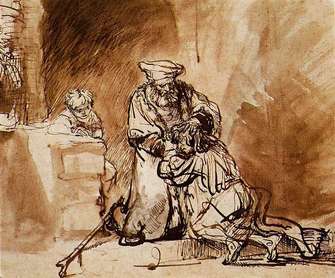
It’s important to make two preambles before I begin. First, all the most interesting insights found below are taken from Amy-Jill Levine’s fantastic book Short Stories by Jesus. Second, this post is an attempt to deal with the parables as we think they were given by Jesus. In doing so, I avoid dealing with Luke’s interpretation, the way he relates them, in the voice of Christ, to repentance (more on this at the end). I want to be clear that this doesn’t imply that Luke’s interpretation and repentance are unimportant, but rather to do justice to both would require more space than a normal blog post allows.
Parables have a way of surprising us by inverting our expectations, forcing us in some cases to reconsider commonly held beliefs or to ask difficult ethical questions. Consider the parable of the “Three Little Pigs.” After two failed attempts, the wolf, in desperation, jumps down the third little pig’s chimney only to land in a cauldron of stew. Pig’s enjoying wolf stew is a surprising result (and in some ways disturbing). Similarly, when Christ told parables his aim was to provoke and disturb and it’s no coincidence that he uses parables to do so.
Luke presents a series of three parables: “The Lost Sheep”, “The Lost Coin”, and “The Lost Son”. All three parables follow a similar pattern: (1) a wealthy individual loses part of his or her wealth, (2) he or she finds the thing that was lost, and (3) its recovery is celebrated with a meal. These three parables follow the “rule of three” whereby the first two in the series set up the third. Again consider the parable of “The Three Little Pigs;” the first two pigs with their homes of straw and sticks set up the story of the third pig with his home of brick. Although the three parables in Luke are similar, the first two help explain the events of the third. To understand how Christ provokes his audience, than, it’s helpful not only to understand how the stories are similar but to also notice the details that make the third story unique. Below is each parable, with a consideration of the way in which Christ uses the story of “The Lost Son” to challenge expectations and ask difficult ethical questions.

 RSS Feed
RSS Feed

